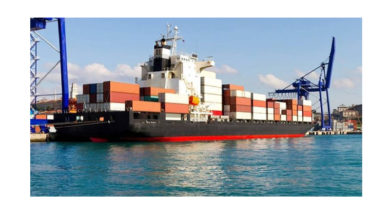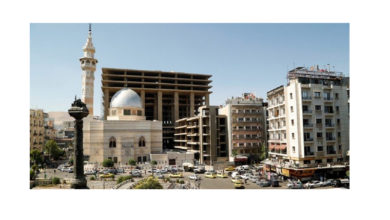HP Announces A Raft Of New Printers
Latex technology which was introduced first time by HP has been around for some time now and other companies such as Mimaki are also jumping on the Latex bandwagon. However it seems that Latex is becoming the technology of choice for HP. Introduced in 2008, HP Latex Printing Technology has established a new large-format product category with more than 19,000 units installed worldwide. The company is investing a considerable amount of money and resources on Latex technology. For HP, Latex is the path to future of LFP. The company so far invested more than 200 million USD on R&D for Latex. 300 HP and non HP lab engineers are working round the clock to develop new generations of Latex products. HP has already registered 300 patents in relation with Latex technology. So there is no surprise that in one of the biggest product announcements by HP, the company introduces a number of new Latex printers as well as two new printers from Z series.
 The announcement took place in Mallorca, Spain on April 2nd. Journalists from around the world were flown to Marbella to participate in the unveiling ceremony of the new printers. Latex 300 printing series are the newest edition to HP’s Latex family of printers. The new series include Latex 310, HP Latex 330 and HP Latex 360. According to HP Small and medium PSPs have long used traditional eco-solvent ink devices for outdoor print jobs, which lengthen turnaround times and limit application versatility. Powered by third-generation, water-based HP Latex ink technology, the HP Latex 300 Printer series helps low-volume customers efficiently handle more outdoor and indoor applications with improved durability and image quality. The new printers use third generation HP 831 Latex print heads.
The announcement took place in Mallorca, Spain on April 2nd. Journalists from around the world were flown to Marbella to participate in the unveiling ceremony of the new printers. Latex 300 printing series are the newest edition to HP’s Latex family of printers. The new series include Latex 310, HP Latex 330 and HP Latex 360. According to HP Small and medium PSPs have long used traditional eco-solvent ink devices for outdoor print jobs, which lengthen turnaround times and limit application versatility. Powered by third-generation, water-based HP Latex ink technology, the HP Latex 300 Printer series helps low-volume customers efficiently handle more outdoor and indoor applications with improved durability and image quality. The new printers use third generation HP 831 Latex print heads.
Designed for operation in small spaces, the entry-level, 54-inch HP Latex 310 Printer offers the benefits of HP Latex in a compact model with front-media loading to maximize the production area. Optimized for the HP Latex 310 and 330 Printers, the e SAi FlexiPRINT HP Basic Edition Raster Image Processor (RIP) software is bundled with these printers.
 The 64-inch HP Latex 330 Printer handles larger, heavier rolls and printing up to 538 ft2/hr (50 m2/hr).
The 64-inch HP Latex 330 Printer handles larger, heavier rolls and printing up to 538 ft2/hr (50 m2/hr).
The higher-volume, 64-inch HP Latex 360 Printer prints up to 978 ft2/hr (91 m2/hr) and increases application versatility with an ink collector for porous textiles. The printer also features automatic front-to-back registration for printing double-sided banners. Printers’ list prices for EMEA are 13500 Euro, 17500 and 22500 respectively.
Abdallah Aoude HP’s regional business manager for Large Format Production Portfolio says although HP now has the widest range of latex printers available there is still room for new printers within Latex series. He says” with the wide versatility and environment awareness on the raise in the Middle East, demand from various segment is growing.” He adds,” This event is a great platform for launching new latex series. It creates great momentum to push the new equipment into the global market including Middle East.” According to Aoude the new latex 300 series as well as Designjets are already available in the Middle East. The 6 colour printers are also coming with HP Latex optimizer which instantly pins pigments on media. The optimizer is an important feature which contributes to the high speed and fast drying time. The ink collector in Latex 360 model is also an interesting feature. It opens up a new market for printers without the need for an additional investment in dye sublimation printer at least at an early stage. It allows them to dip their toe in the textile printing water.
The seaweed analogy
There is no doubt that HP is having a successful run with Latex technology. The company is promoting the ink as an eco-friendly products. Being a water based ink Latex is better than some other types of inks especially solvent as far as environmental issues are concerned. But they have their own drawbacks such as the use of co-solvents (humectants) to soften the media so that the ink can bind to the surface and extreme heat, which results in a film that encapsulates the pigments and doesn’t dissolve in water. Nils Miller HP’s senior scientist explains: “No ink is 100% waterless. There is always limitation about the viscosity of the ink and how thick the fluid is. It has to be in the right range.
 The type of water based ink used in a printer depends to the application. For photographic application you need a special paper and high quality ink. But if you want durability as well then you also need coating. As a chemist I can add binders and polymers to the ink to improve the durability of ink for photographic application. But if the ink is for outdoor signage then you need durability, scratch resistance, water resistance and so on. It’s a whole different category. You need a stronger film of polymer to make a tougher layer without a need for laminate for many applications. In this case I have to put more polymers into water based ink. You have to create a polymer solution.
The type of water based ink used in a printer depends to the application. For photographic application you need a special paper and high quality ink. But if you want durability as well then you also need coating. As a chemist I can add binders and polymers to the ink to improve the durability of ink for photographic application. But if the ink is for outdoor signage then you need durability, scratch resistance, water resistance and so on. It’s a whole different category. You need a stronger film of polymer to make a tougher layer without a need for laminate for many applications. In this case I have to put more polymers into water based ink. You have to create a polymer solution.
It’s like a seaweed in the ocean. If there’s too much seaweed it gets tangled up and you just can’t swim. That’s what the ink would look like if we just put too much polymer into it. The solution to this problem is dispersion. In this case you have balls of seaweed in the ocean. You can swim easily and once in a while you see balls of seaweed around you. This is the kind of ink that can reliably be used in the print head and when lands on the media the balls of polymer unfolds. The heat then turns the polymer into a film. But the basic ingredient of the ink by far is water.
 Some of the ingredients we us in the ink however can contribute to VOC measurements. We never claimed our inks are 100% VOC free. We said they are low in VOC. One of the ingredients we use in our inks is called humectant (moisting agents). Humectants have some volatile behaviour. But they are completely safe. Humectant are also used in cosmetics. We select these materials carefully. We don’t want to upset the basic idea behind our environmentally friendly production and sustainability of our water based inks.”
Some of the ingredients we us in the ink however can contribute to VOC measurements. We never claimed our inks are 100% VOC free. We said they are low in VOC. One of the ingredients we use in our inks is called humectant (moisting agents). Humectants have some volatile behaviour. But they are completely safe. Humectant are also used in cosmetics. We select these materials carefully. We don’t want to upset the basic idea behind our environmentally friendly production and sustainability of our water based inks.”
HP’s Latex ink is in its third generation. So we can assume it has improved substantially. One of the major drawbacks of the Latex inks has been the extreme heat required for drying process which causes media distortion. It seems that in third generation this problem has been addressed.” We continually try to improve the versatility of our inks. But our improvement is not limited to our inks. We have also improved our drying process. We always knew convective drying is an efficient way for drying water based ink. The idea was not new to us. But in the latest Latex platform our experts in Barcelona engineered a smart and nice approach to this efficient and effective drying method. Convective drying is all about the mass of air, velocity of the air and dryness of the air but not so much about the temperature of the air. Using dry air makes it easier to remove the moisture.” Explains Miller.
Latex has been a successful strategy for HP however there are still new ink formulations such as SUV that are coming to the market. So is Latex the magic ink that everybody was waiting for?
Joan Perez Pericot, HP’s sign and worldwide marketing director believes for flexible material Latex is the right choice,” We at HP have come to the conclusion that Latex is the best option for flexible material and we will continue to invest in this technology. The success we had with our L3000 also proves that Latex is a perfect solution for high productivity superwide format applications as well. We have already stopped the production of XL printers and we are replacing our SP range with Latex. For the rigid material however the UV is the best option and we are offering a full range of UV printers for this market. Following the launch of L3000 many asked us that if L5000 will follow. The 5 meter printer market is not very big at the moment. Roughly hundred 5 meter printers are sold every year. The 5 meter market is dominated by low price UV printers. We are still looking into this market and if we see the opportunity we will definitely come up with new products.” Concludes Pericot.
The extended Z series family
HP also launched two new printers from the Z series. The new HP Designjet Z6600 Production Printer and HP Designjet Z6800 Photo Production Printer increase productivity with print speeds up to 50 percent faster than previous HP devices. Additionally, these printers are uniquely designed to deliver high-value indoor applications and gallery-quality prints, with durable output that last up to 200 years.
According to manufacturer the HP Designjet Z6600 Production Printer prints more efficiently than its predecessor using up to 30 percent less ink saving time and costs with an optimized ink configuration.
The HP Designjet Z6800 Photo Production Printer produces top-quality prints at high speeds with advanced colour management features, including an embedded spectrophotometer, as well as HP Chromatic Red Ink for a wider colour gamut and uniform gloss. The list EMEA price for these two printers are 12400 and 15900 respectively.
HP also announced a number of upgrades to FB 500 and FB 700 Scitex range. The upgrades include new spindle, multi- image up to 9-up, new user interface and increased job storage.
HP also offers new media option for HP Latex inks which are available through licensing partner Brand Management Group (BMG). These include Type II certified HP PVC-free Durable Suede Wall Paper, an improved version of HP HDPE Reinforced Banner and three new photographic based materials.
With the new offerings HP effectively can offer a wide range of Latex printers in different sizes and configurations. It’s hard to predict future but HP strongly believes in future of Latex. Others such as Mimaki also remind us that there are other options but so far Latex proved to be a strong contender to be a de facto LFP ink.





